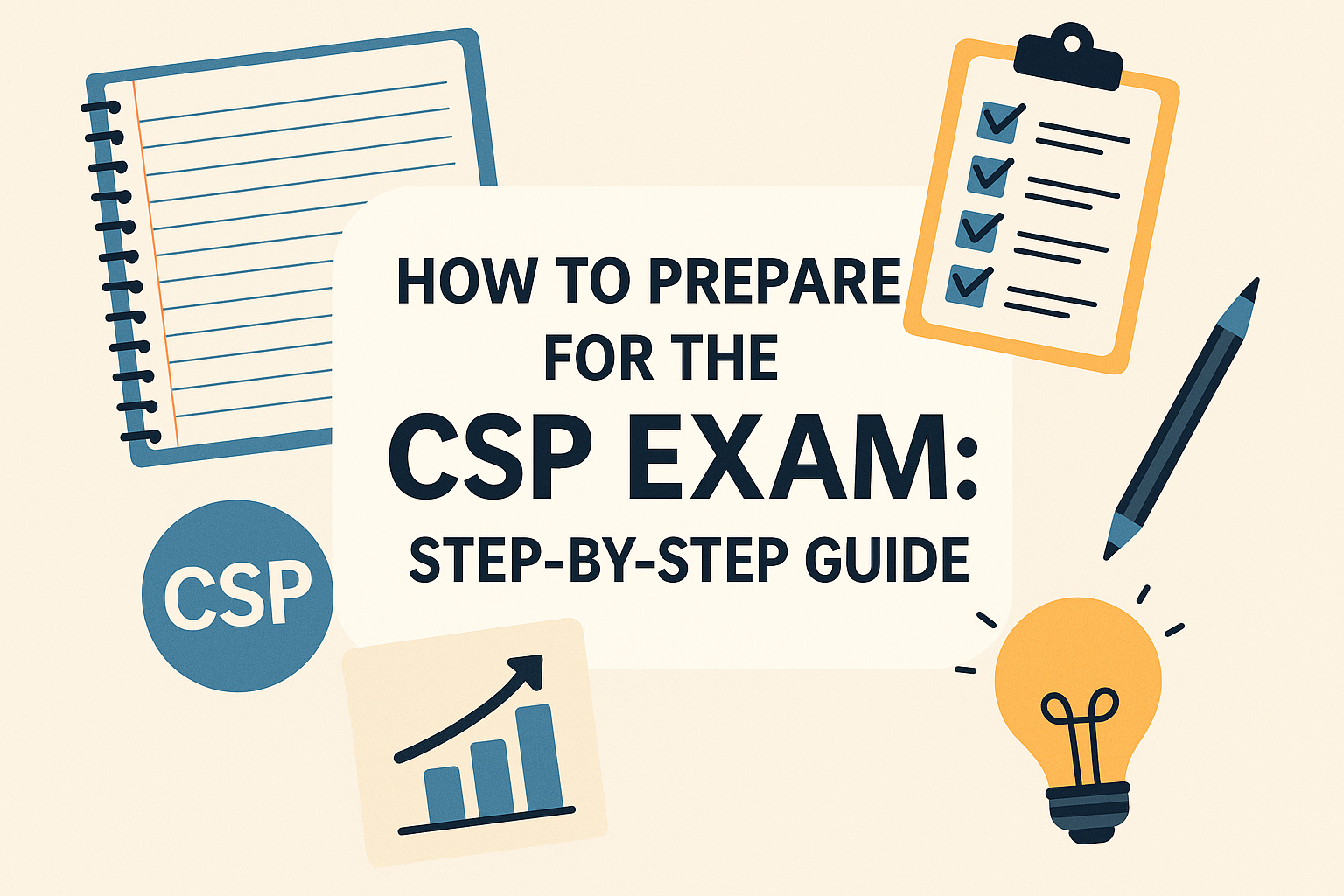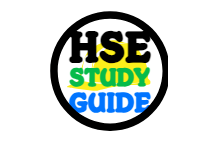
How to Prepare for the CSP Exam: Step-by-Step Guide
So, you’re thinking about taking the CSP exam? That’s a big deal—and a smart move if you’re serious about your safety career. The Certified Safety Professional (CSP) credential is one of the most respected certifications in occupational safety. It shows employers you’ve got the knowledge, the skills, and the discipline to manage health and safety at a high level.
But let’s be real: the CSP exam is tough. It’s not just about memorizing facts—it’s about thinking critically, solving problems, and applying safety principles in real-world situations. That’s why we’ve put together this step-by-step guide to help you ace the CSP exam on your first try.
Understanding the CSP Exam
Overview of the CSP Certification
The CSP is offered by the Board of Certified Safety Professionals (BCSP) and is considered a gold standard for safety professionals globally. It’s designed for those who have already cleared the ASP (Associate Safety Professional) or hold a GSP (Graduate Safety Practitioner) designation.
Eligibility Requirements
Before you can sit for the CSP exam, make sure you meet these requirements:
- Hold a BCSP-approved credential (like ASP or GSP)
- Have at least a Bachelor’s degree in any field
- Possess 4 years of professional safety experience where safety is at least 50% of your job duties
Domains and Topics Covered
The CSP exam covers seven domains, including:
- Advanced Math & Physics
- Safety Management Systems
- Risk Management
- Fire Protection & Emergency Planning
- Environmental Management
- Occupational Health
- Training and Communication
Step 1 – Know What You’re Up Against
Breakdown of the CSP Blueprint
The CSP blueprint tells you exactly what topics will be tested. It breaks down:
- Percentage of questions from each domain
- The depth of knowledge required
- Specific task statements under each domain
Domain Weightage and Focus Areas
Here’s a rough breakdown:
- Risk Management: 19%
- Safety Programs and Concepts: 25%
- Occupational Health: 10%
- Emergency Management: 9%
- Environmental Management: 6%
- Training: 10%
- Law and Ethics: 8%
- Math & Physics: 13%
Exam Format and Duration
- 200 multiple-choice questions
- 5 hours to complete
- Computer-based testing at Pearson VUE centers
Step 2 – Gather the Right Study Materials
Recommended Books and Guides
- Safety Professional’s Reference & Study Guide by W. David Yates
- Fundamentals of Industrial Hygiene by AIHA
- CSP Exam Prep by BCSP
Online Courses and Resources
- BCSP-approved providers like Bowen EHS
- YouTube channels like “The HSE Coach” (yes, that’s you!)
- CSP prep apps and online forums
Flashcards, Podcasts, and Videos
- Use apps like Quizlet
- Listen to safety-related podcasts while commuting
- Watch breakdown videos on key formulas
Step 3 – Build a Study Plan That Works
How Many Months Do You Need?
Most candidates study for 3 to 6 months depending on experience and daily availability.
Weekly Study Schedule
- Monday to Friday: 1–2 hours a day
- Saturday: Practice exam and review
- Sunday: Rest or light revision
Tracking Progress
Use Excel sheets or Google Calendar to track completed topics and practice scores.
Step 4 – Master Each Domain Strategically
Instead of studying randomly, follow the domain order from your blueprint and use the Pomodoro technique (25 minutes focus + 5 minutes break). Use real-world examples to better understand tricky concepts.
Step 5 – Practice, Practice, Practice
Sample Questions and Practice Exams
You should complete at least 1000+ practice questions before sitting the exam.
Time Management During Practice
Set strict time limits during mock tests to mimic the real exam environment.
Analyze Your Mistakes
Each wrong answer is a learning opportunity. Keep a “Mistake Journal.”
Step 6 – Join a Study Group or Find a Mentor
Benefits of Study Communities
- Get your doubts clarified quickly
- Motivation through accountability
- Share resources and insights
Where to Find Study Groups
- LinkedIn Safety Groups
- Facebook CSP prep communities
- BCSP forums and Reddit
Step 7 – Prepare for Exam Day
What to Bring
- 2 forms of ID
- Appointment confirmation
- Confidence (no joke, it matters)
Test Center Tips
- Arrive 30 minutes early
- Use the restroom before starting
- Don’t rush – pace yourself!
Staying Calm and Focused
Practice breathing techniques and positive visualization the night before and morning of the exam.
Step 8 – After the Exam
Getting Your Results
You’ll know your pass/fail status immediately after completing the test.
What if You Don’t Pass?
Don’t panic. You can reapply after 90 days and take it up to 3 times in a 12-month period.
Maintaining Your CSP Certification
You must:
- Recertify every 5 years
- Earn Continuing Education Units (CEUs)
- Report professional development activities
Bonus Tips for CSP Success
Stay Consistent, Not Perfect
It’s better to study daily for 30 minutes than cram for 3 hours once a week.
Use Active Recall & Spaced Repetition
Flashcards + reviewing difficult topics frequently = retention booster.
Avoid Burnout – Balance is Key
Take breaks. Go for walks. Don’t forget to live while you study.
Conclusion
Passing the CSP exam isn’t just about proving your knowledge—it’s a major step in building your career as a safety leader. With the right mindset, a clear strategy, and consistent effort, you’ll be well on your way to adding “CSP” after your name. And that’s a title worth working for.
Certified Safety Professional – CSP Career Guide: Jobs, Salaries & Growth (2025)
BCSP New Rules 2025: What Employers Must Know
Certified Safety Professional (CSP) Preparation Guide
Certified Safety Professional (CSP) Certificate Course
CSP Certification Requirements
FAQs
Q1: How long does it take to prepare for the CSP exam?
Most candidates need 3 to 6 months of consistent study.
Q2: Is the CSP exam harder than the ASP?
Yes, CSP is more in-depth and covers broader concepts.
Q3: What is the passing score for the CSP exam?
The passing scaled score is 350 out of 700.
Q4: Can I take the CSP exam without taking the ASP first?
No, you need to pass the ASP or have a GSP designation.
Q5: What happens after I pass the CSP exam?
You’ll receive your certificate and be listed in the BCSP directory as a Certified Safety Professional.
























